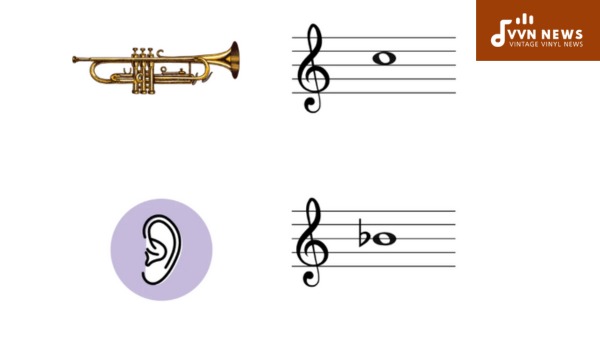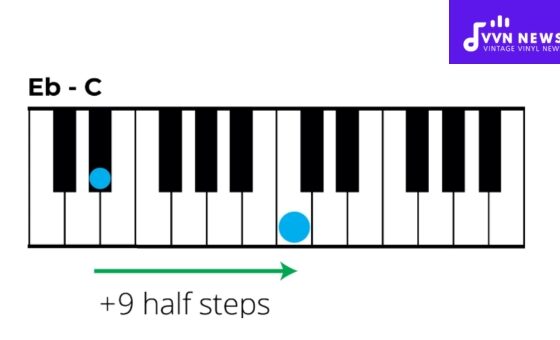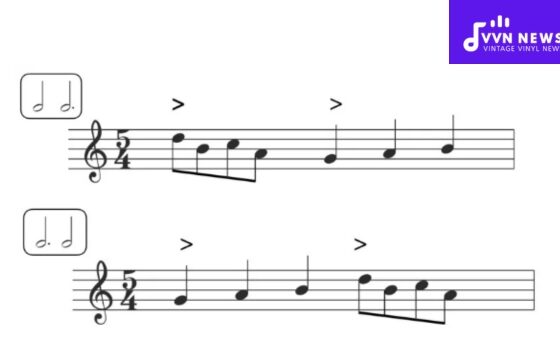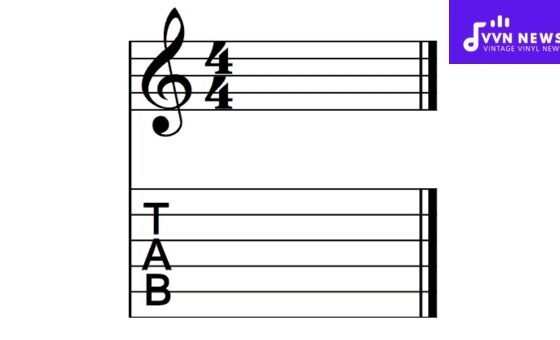As a trumpet player, I have always been fascinated by the technical side of music. One concept that has challenged me over the years is transposition for trumpet.
Being able to seamlessly switch between different keys and pitches on the trumpet is a skill that every serious player must master.
In this blog post, I will share with you some tips and tricks that I have learned along the way to make transposition a breeze.
Mastering transposition for trumpet can seem daunting at first, but with practice and proper guidance, it can become second nature.
Whether you are a beginner or an advanced player looking to improve your skills, understanding how to transpose music notes is essential.
In this article, I will break down the process step by step and provide you with useful techniques to simplify the complex world of transposing on the trumpet. So, let’s dive in and explore the fascinating world of transposition for trumpet together!
What Is the Trumpet in B-flat?
The trumpet in B-flat is the most common type of trumpet used in Western music, and it is often referred to simply as a B-flat trumpet.
The “B-flat” refers to the instrument’s fundamental pitch, meaning that when the player plays a written “C” on a B-flat trumpet, it sounds like a concert “B-flat.”
This transposition allows the trumpet player to read music written for instruments in C (such as piano and flute) without having to mentally adjust the notes.
The B-flat trumpet is the standard choice for most beginner and professional trumpet players, and its orchestral role is essential in ensembles ranging from jazz bands to symphony orchestras.
Also Read: F Music Note [Unlock The Secrets Of The Musical Alphabet]
How Can You Use a Transposition Chart for the Trumpet?
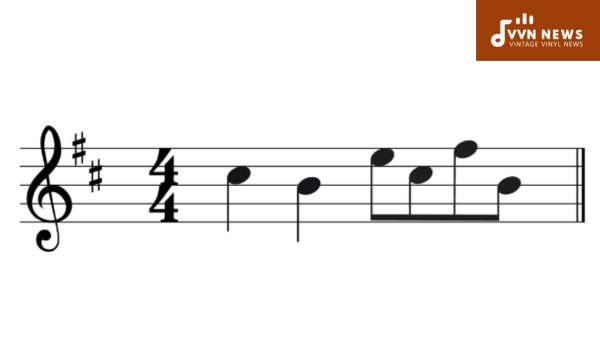
Understanding and using a transposition chart is crucial for trumpet players who want to play music written in different keys. Here’s a step-by-step guide on how to use a transposition chart effectively.
Understand the Concept
A transposition chart is a tool that helps you understand how different instruments transpose music. For example, when you see written music for a piano (in the key of C), you can use the chart to determine what notes to play on your B-flat trumpet.
Identify the Key
First, identify the key of the piece you want to play. This information tells you how many steps up or down you need to transpose.
Locate the Original Note
Next, find the note in the original key in your transposition chart. This will be on the left or top row of the chart.
Determine the Transposed Note
Once you locate the original note, find its corresponding transposed note in your desired key. This will be on the same horizontal row as your original note but in a different column.
Adjust for Trumpet’s Key
Lastly, make any necessary adjustments based on your trumpet’s key (B-flat). If you see an “A” in your transposition chart, for example, you’ll need to play it as a concert “B-flat” on your B-flat trumpet.
By following these simple steps and relying on a reliable transposition chart, you’ll be able to confidently transpose music on your B-flat trumpet and expand your repertoire across various musical genres.
Also Read: D Music Notes And Keys [Unraveling The Basics Of Guitar]
What Are the Steps to Transpose Music from Trumpet to Piano?
Transposing music from trumpet to piano involves the process of converting the trumpet’s B-flat notation to C notation suitable for piano.
It may seem challenging at first, but with a systematic approach, you can easily transpose music between these two instruments. Here are the steps you can follow:
- Understand the difference in pitch: The trumpet is a transposing instrument, meaning that when it plays a written “C,” it sounds like a concert “B-flat.” On the other hand, the piano is a non-transposing instrument, where “C” sounds like a concert “C.” This difference in pitch is crucial while transposing.
- Identify key signature and written notes: Look at the original piece of music written for the trumpet and identify the key signature and all written notes.
- Determine the interval between trumpet and piano: Calculate the interval between B-flat (trumpet) and C (piano). It is one whole step or two half steps up on the piano keyboard.
- Apply interval adjustment: Adjust all written notes in B-flat down by two half steps or one whole step on paper or mentally.
- Re-write or play: Once you have made adjustments, re-write the transposed piece on staff paper using C notation suitable for piano or play it directly on the piano.
- Review accuracy: Carefully compare your transposed version with the original sheet music to ensure accuracy in note placement and rhythm.
- Practice and refine: Practice playing your transposed piece on the piano, paying close attention to dynamics, phrasing, and overall musicality. Refine your interpretation as needed.
- Utilize tools if needed: If you find transposing manually challenging or time-consuming, there are software tools available that can assist in transposition tasks. These tools automatically transpose music and provide you with a transposed version of the sheet music.
Transposing music is a skill that improves with practice. Start with simple pieces and gradually work your way up to more complex compositions.
By following these steps and being patient, you will become proficient in transposing music from trumpet to piano.
How Do You Transpose Bb to C on the Trumpet?
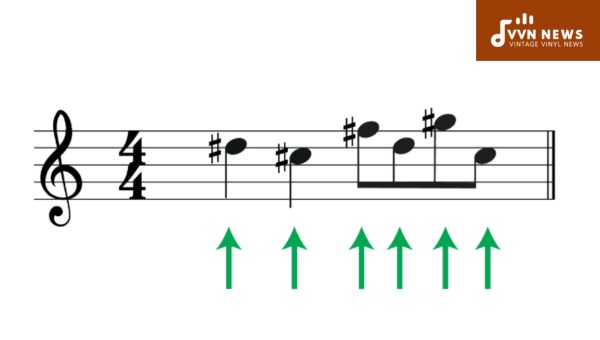
Transposing music from B-flat (Bb) to C on the trumpet can be a bit confusing at first, but with some practice and understanding, it becomes much easier.
Transposing is necessary when playing with instruments that are written in different keys, such as a piano or flute which is typically written in the key of C.
Here’s a step-by-step guide to help you transpose from Bb to C on the trumpet:
- Understand the transposition difference: A Bb trumpet is pitched a whole step lower than the concert pitch (C). This means that whenever you see a written C on sheet music, you will need to play a D on your Bb trumpet to produce the correct pitch.
- Familiarize yourself with the key signatures: Make sure you understand how different key signatures work and which notes are affected by them. In the case of transposing from Bb to C, there will be no change in the key signature.
- Mentally adjust while reading sheet music: When reading sheet music written for instruments in concert pitch (C), such as piano or flute, be aware that all notes will need to be adjusted up by a whole step. For example, if you see a written G on the sheet music, play an A on your Bb trumpet.
- Practice scales and arpeggios: To become comfortable with transposing Bb to C, practice playing scales and arpeggios in both keys. This will help familiarize yourself with the fingerings needed for each note in both keys.
- Think ahead while playing: As you gain more experience with transposition, try to anticipate which notes need adjusting while performing. This skill will come naturally over time and make transposing more effortless.
Transposing from Bb to C on the trumpet requires mental flexibility and practice. By understanding the basic principles and consistently working on transposition exercises, you will gradually become proficient in this essential skill for trumpet players.
Also Read: E Music Note Guide [Unlock Your Guitar’s Potential]
What Is the Process to Transpose Trumpet to Alto Sax?
Transposing from trumpet to alto saxophone involves adjusting the written music so that it sounds correct when played on the alto saxophone. Since the trumpet is a transposing instrument in B-flat, and the alto saxophone is in E-flat, this requires changing the pitch of each note accordingly.
Here is a step-by-step guide to transposing trumpet music to alto sax:
- Determine the key of the trumpet piece: Start by identifying the key of the written music for the trumpet. This will help determine how much you need to transpose.
- Understand transposition for alto sax: Know that alto saxophones are pitched a major sixth lower than written music. This means that if you see a C on trumpet sheet music, you will play an A on the alto saxophone.
- Transpose each note up a major sixth: Use this formula to transpose all notes in your trumpet music up by a major sixth. For example, if you see an E on trumpet sheet music, play a C on your alto saxophone.
- Be mindful of accidentals: Pay attention to sharps, flats, and naturals in your transposed notes. Ensure you carry over accidentals correctly while transposing.
- Consider octave adjustments: Sometimes, you may need to adjust octaves during transposition for better playability and musicality. Use your judgment and knowledge of instrumental ranges when making octave adjustments.
- Write out or find transposed sheet music: Once you have completed transposing your trumpet piece for alto sax, either write out the new notes on blank sheet music or search for pre-transposed versions online or in sheet music books specifically made for alto saxophone players.
Remember that practicing transposition regularly will improve your skills over time. With practice and familiarity with both instruments’ ranges and tendencies, transposing from trumpet to alto sax will become easier and more natural.
How Do You Convert Trumpet Music in D to B-flat?
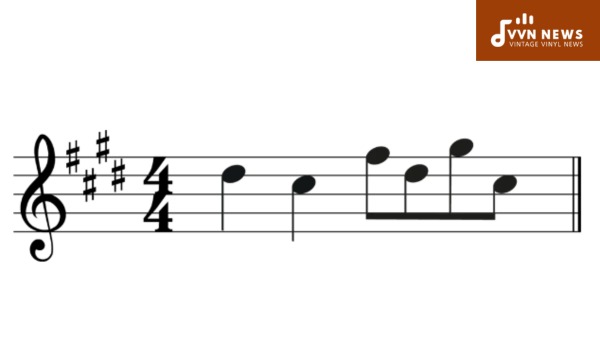
Transposing trumpet music from D to B-flat can be a straightforward process if you understand the fundamentals. Here are the steps to convert trumpet music written in D to B-flat:
Identify the Key Difference
The first step is to identify the key difference between the original music (in D) and the desired transposed key (B-flat). In this case, we are transposing down a whole step, so the key difference is a major second.
Move Every Note Down a Whole Step
To transpose from D to B-flat, every note in the original music needs to be moved down a whole step. A whole step means two semitones or two keys on the piano. For example, if you see a “D” in the original music, it should be played as a “C” on the trumpet in B-flat.
Adjust Key Signatures and Accidentals
Make sure to adjust any key signatures and accidentals according to the new transposed key. For example, if there was a sharp sign (#) on an F note in the original music, it should now be written as an E in the transposed B-flat part.
Be Aware of the Range of Differences
Keep in mind that different instruments have different ranges. While notes may transpose correctly, you need to ensure that they fall within the playable range of your instrument. Double-check that any extreme high or low notes still work on your trumpet in B-flat.
Practice Transposed Music
Once you have successfully transposed your music from D to B-flat, it’s time to practice! Start playing through your transposed part slowly at first and gradually increase your speed as you become more comfortable with it.
Transposing takes practice and patience. As you become more familiar with different transpositions, you will find it easier to quickly and accurately play music in various keys.
Don’t be discouraged if it takes time to get it right – every musician goes through this learning process.
Also Read: 12 Tips To Improve Your Low Notes On The Flute [Easy Strategies To Learn]
What Techniques Are Used to Transpose Trumpet to Trombone?
Transposing from trumpet to trombone can be a valuable skill for musicians seeking versatility in their playing.
The trombone is a versatile instrument that can play in various keys, and transposing from the trumpet can open up new musical opportunities.
Here are some techniques and steps to transpose trumpet music to trombone:
- Understand the difference in pitch: The trumpet is a B-flat instrument, whereas the trombone is generally pitched in C. This means that when a trumpet player plays a written C, it sounds like a B-flat on the trumpet but as a concert C on the trombone.
- Use a transposition chart: A transposition chart is an invaluable tool when transposing between different instruments. It provides the necessary adjustments needed for each key. Refer to a trusted transposition chart or app specifically designed for transposing trumpet music to a trombone.
- Move the notes down one whole step: As you transpose from trumpet to trombone, you will need to lower the written notes by one whole step, meaning each note will be played two semitones lower on the trombone.
- Adjust for key signatures: Take into account any key signatures present in the original piece and adjust accordingly when transposing. For example, if there are sharp or flat symbols written in the original piece, they must be adjusted accordingly when transposed for trombone.
- Pay attention to range limitations: Keep in mind that certain notes may not be within the playable range of the trombone. Be prepared to make octave adjustments if necessary or consult with experienced trombonists for advice on adapting certain passages.
By utilizing these techniques and taking care with key signatures and ranges, you can successfully transpose music from trumpet to trombone.
Practice regularly and consult with experienced musicians for additional guidance along your musical journey!
What Is the Method for Transposing the Trumpet to Guitar?
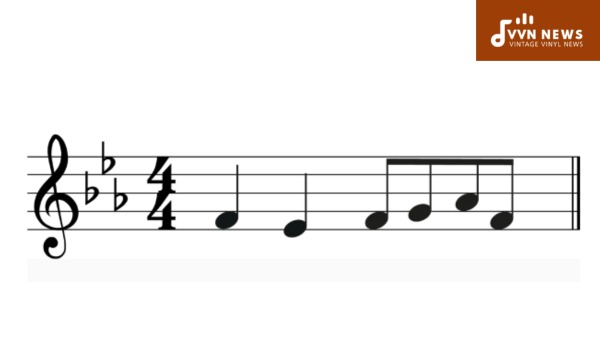
Transposing music from trumpet to guitar can be a useful skill for guitarists who want to play songs originally written for trumpet or jam with other trumpet players.
While the guitar is a transposing instrument itself, commonly written in concert pitch, understanding the process of transposition allows guitarists to effectively adapt music written for other instruments. Here are the steps to transpose trumpet music to the guitar:
Identify the Original Key and Key of the Guitar
Determine the key of the original trumpet piece. This information is typically indicated at the beginning of the sheet music. Next, decide which key you want to play on the guitar.
Understand that the Trumpet is a B-flat Instrument
Remember that the trumpet is a B-flat instrument, while the guitar is typically written in concert pitch.
This means that notes played on a B-flat trumpet will sound lower by a whole step compared to those played on a concert pitch instrument.
Use a Transposition Chart
Consult a transposition chart specifically designed for transposing between B-flat and concert pitch instruments like guitar.
These charts indicate how many half steps higher or lower you should play on your guitar compared to the original music for trumpet.
Apply Transposition Chart
Follow the instructions on the transposition chart to readjust each note in the sheet music accordingly.
Start from your starting note and apply the specified number of half steps indicated in the chart. For example, if your starting note is C and the chart states “+2,” you would play D on your guitar.
Also Read: D Flat Music Note [Cracking The Code Of Musical Notation]
Be Mindful of Range and Fingerings
Be aware of any notes or passages that lie outside of your guitar’s range or are difficult to finger comfortably.
In such cases, consider using different octaves or alternative fingerings to maintain playability without compromising musical integrity.
Practice and Refine
Once you have transposed the music to the guitar, practice it carefully, making sure that you are comfortable with the new key and any changes in fingering.
This step may also involve adjusting chords or melodies to fit the guitar’s voicing and playability.
With practice and familiarity, transposing trumpet music to the guitar will become more intuitive. It’ll open up a whole new world of musical possibilities as you can now effortlessly play trumpet parts on your guitar.
How Can You Transpose F to Bb on the Trumpet?
Transposing from the key of F to B-flat on the trumpet can be a challenging task, but with a systematic approach and practice, it can become second nature. Here’s a step-by-step guide to help you transpose F to B-flat on the trumpet:
- Understand the transposition: The trumpet is a transposing instrument, meaning that when it plays music written in a certain key, it sounds a different pitch. In this case, when the trumpet plays music written in F, it needs to transpose it down by a whole tone to sound in B-flat.
- Mentally adjust the written notes: Take the sheet music written in F and mentally lower all of the written notes on your part by two whole steps or two half-steps (a whole tone). For example, if you see an “A” note in your sheet music, you will play it as an “G” on your B-flat trumpet.
- Use your knowledge of key signatures: Familiarize yourself with the key signature of F major (one flat) and B-flat major (two flats). This will help you know which notes need to be adjusted when transposing.
- Practice scales and arpeggios: Incorporate practicing scales and arpeggios in both F major and B-flat major into your daily practice routine. This will help you internalize the transposition and improve your overall musicianship.
- Train your ear: Listen to recordings or use apps that allow you to play along with tracks in different keys. This will help develop your ear so that you can quickly identify correct pitches when transposing.
- Use a transpose chart: If you’re new to transposition or need quick reference while playing, consider using a transposition chart specifically for trumpet players. These charts provide visual guides for transposing between different keys, including F to B-flat.
Transposing F to B-flat on the trumpet requires practice and repetition. Be patient with yourself as you work through the process and gradually incorporate transposed music into your repertoire.
Also Read: B Music Note [In-Depth Guide To Reading Musical Notation]
How Does Computer Software Aid in Trumpet Transposition?
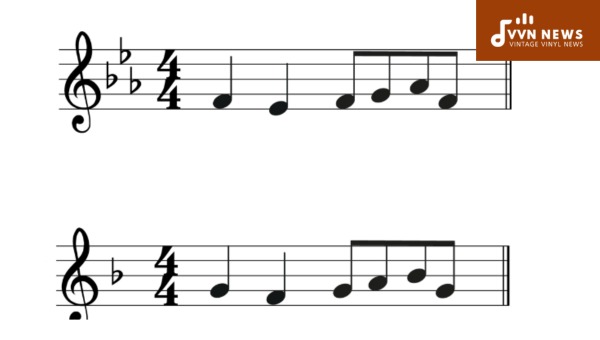
Computer software has revolutionized many aspects of music education and performance, and trumpet transposition is no exception.
With the help of specialized software, trumpet players can quickly and accurately transpose music from one key to another. Here are some ways computer software aids in trumpet transposition:
1. Transposition Features
Modern music notation software, such as Sibelius, Finale, and MuseScore, often have built-in transposition features that make the process effortless.
These programs allow you to input the original piece in one key and then easily transpose it for a trumpet or any other instrument. All the notes will be automatically adjusted according to the desired transposition.
2. Real-Time Playback
One of the significant advantages of using computer software for trumpet transposition is that you can listen to your transposed music in real time.
As you play the original piece on your computer keyboard or MIDI controller, the software will simultaneously output the sound as if it were played on a B-flat trumpet.
This lets you hear how your musical ideas will sound on an actual instrument while transposing.
3. Customization Options
Most transposition software provides customization options that allow you to fine-tune various aspects of your transposed piece.
You can adjust dynamics, articulations, tempos, and even swap instruments if needed. This level of control ensures that your transposed music sounds just as intended.
4. Learning Aids
Some computer software comes with additional learning aids specifically designed for trumpet players to learn to transpose.
These tools include interactive tutorials, exercises, and quizzes that help improve understanding and accuracy in transposing music.
5. Sharing and Collaboration
Digital sheet music platforms like Noteflight and Flat.io make it seamless to share transposed trumpet music with other musicians.
You can collaborate with bandmates or teachers by simply sending them a link or sharing a file digitally. This eliminates the inconvenience of having to print and distribute physical copies of transposed music.
6. Speed and Accuracy
Using computer software for trumpet transposition significantly speeds up the process while ensuring accuracy.
You no longer need to manually write out each note and mentally transpose it; the software handles these tasks effortlessly. This frees up your time to focus on other aspects of your musicianship.
Computer software greatly aids in trumpet transposition by providing features like automatic transposition, real-time playback, customization options, learning aids, easy sharing, and enhanced speed and accuracy.
How Does Computer Software Aid in Trumpet Transposition?
Computer software has revolutionized the music industry, making various tasks, including transposition for trumpet, much easier and more efficient.
With the help of specialized transposition software, trumpet players can quickly and accurately transpose music from one key to another. Here are some ways in which computer software aids in trumpet transposition:
1. Automatic Transposition
Modern transposition software allows trumpet players to automatically transpose music with just a few clicks.
By inputting the original key and desired key, the software will instantly generate the transposed music notation for the trumpet player.
This eliminates the need for manual note-by-note transposition, saving time and reducing errors.
2. Real-Time Playback
One of the advantages of using computer software for transposing trumpet music is the ability to hear a real-time playback of the transposed music.
The software can play back the transposed notes on a virtual trumpet instrument or any other MIDI-compatible instrument, allowing players to check their work and ensure accuracy.
3. Customizable Settings
Transposition software often comes with customizable settings that allow users to adjust various parameters according to their needs.
These settings may include selecting specific instruments (e.g., B-flat or C trumpet), choosing different tempos, or modifying articulation styles.
Having control over these settings helps customize the transposed music to match personal preferences or ensemble requirements.
4. Music Notation Editing
Many transposition software programs also offer advanced editing features that enable users to make adjustments to the transposed notation.
This can include editing note durations, adding dynamic markings, articulations, or other expressive elements that enhance the interpretation of the music.
Also Read: A Sharp Music Note [Unlocking The Secrets Of Musical Notation]
5. Integration with Music Production Software
Some professional-level transposition software seamlessly integrates with popular digital audio workstations (DAWs) used in music production.
This integration allows trumpet players to import and export their transposed compositions, collaborate with other musicians, and further enhance their music using additional production tools.
6. Mobile Apps
In addition to desktop software, there are also mobile apps available for trumpet transposition. These apps offer similar features but in a more portable format.
They can be particularly handy for on-the-go practice sessions or when collaborating with other musicians outside of a traditional studio setting.
Transposing music for the trumpet has never been easier thanks to the advancements in computer software.
These tools not only save time and effort but also provide a valuable learning aid for trumpet players of all levels.
By utilizing transposition software, trumpeters can quickly and accurately transpose music into their desired key, allowing them to confidently perform in various musical settings.
FAQs About Transposition For Trumpet
Can you explain the process of transposing music for the trumpet to a different key?
Transposing music for trumpet involves shifting the written notes up or down by a specific interval. For example, if you are playing a B-flat trumpet and need to transpose music written for a C instrument, you have to mentally adjust each note up a whole step.
Why is transposition important for trumpet players?
Transposition allows trumpet players to play music written for other instruments without having to learn entirely new fingerings and techniques. It expands their repertoire and enables them to fit into different musical contexts more easily.
Are there any tools or resources available to help with transposition?
Yes, many trumpet players use transposition charts or apps that provide a reference guide for transposing between different keys. These charts show the relationship between concert pitch (C) and the corresponding written pitch on the B-flat trumpet.
Can you give an example of transposition from B-flat to C on the trumpet?
Sure! Suppose you come across a piece of music written in C that you want to play on your B-flat trumpet. To transpose it, simply mentally move each note down two half steps. For example, if the original note is C, on your B-flat trumpet, you would play A.
How can computer software assist with transposing music for the trumpet?
There are various computer software programs available that can automatically transpose sheet music from one key to another with just a few clicks. These programs save time and effort by doing all the calculations and adjustments for you, ensuring accurate transpositions every time.
Conclusion
In conclusion, transposition for the trumpet is a crucial skill to master for any serious trumpet player. By understanding the concept of transposing music notes and using a transposition chart, players can easily switch between different keys and pitches.
Whether you are transposing from B-flat to C, D to B-flat, or even to other instruments such as the piano, saxophone, trombone, or guitar, following the steps and techniques outlined in this article will make the process much more manageable.
Remember, with practice and dedication, transposition on the trumpet will become second nature, allowing you to effortlessly play music in any key. Happy transposing!
